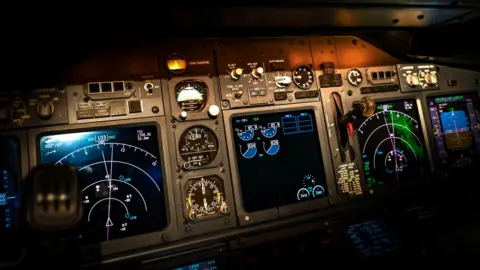Investigators have reported unsettling revelations in the probe of the tragic Air India Flight 171 crash which claimed 260 lives in June. Shortly after takeoff, both fuel-control switches of the Boeing 787 Dreamliner unexpectedly shifted to "cut-off", cutting fuel supply to the engines and resulting in a loss of power. This maneuver, typically reserved for after landing, has sparked intrigue as cockpit audio recordings reveal one pilot questioning the other's action regarding the switches, to which the response indicates that the action was unwarranted.
In the less than 40 seconds of flight, the aircraft reached 625 feet before contact with the flight location was lost, leading to the inexplicable crash into a residential area in Ahmedabad. The investigation predominantly led by local authorities alongside international experts from Boeing and regulatory bodies seeks to piece together the perplexing circumstances surrounding the flight's demise.
A startling facet of the findings illustrates that the fuel switch mechanism is constructed with multiple safety features, making an accidental dual activation highly improbable. Aviation expert Shawn Pruchnicki emphasized this oddity, questioning whether it was a deliberate action by the pilot or an error stemming from confusion—however, there's no evidence to suggest any unusual situations were present preceding the activation.
Peter Goelz, a former NTSB director, echoed these concerns, characterizing the findings as alarming, especially since the actions of a pilot disabling both fuel switches within mere moments of taking off raises serious queries about decision-making or malfunction. The lack of clarity on which pilot initiated the fuel system cut-off only complicates the inquiry further.
As investigators focus on the voice identification from the cockpit recorder—which contains essential sound data but lacks precise identification—the need for enhanced recording techniques has been emphasized. Notably, all crew members were reportedly fit for flight, passing standard breathalyser tests prior to boarding.
An intriguing point of discussion has arisen concerning the potential for the fuel control switches, identified in a previous FAA advisory as having disengaged locking mechanisms in some Boeing models, to contribute to this incident. However, some experts caution against placing excessive focus on this issue without further evidence.
Additionally, investigators have ruled out fuel contamination and are now delving deeper into the fuel control systems’ reliability and whether an electronic malfunction may have inadvertently activated the switches. The confirmed deployment of the Ram Air Turbine during the event indicates a severe power and system failure, further underscoring the gravity of the situation.
With investigation efforts ongoing, experts stress that understanding the dynamics of pilot reaction and aircraft responsiveness in emergencies remains vital, as lessons learned may prompt necessary enhancements to aviation safety protocols to avoid future tragedies.





















